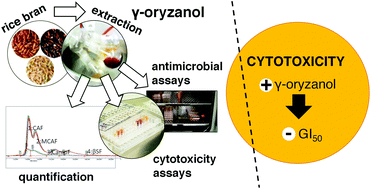Exploiting the bioactive properties of γ-oryzanol from bran of different exotic rice varieties
Abstract
The rice industry is one of the most significant food industries since rice is a widely consumed cereal in the world. As a result of this substantial production, the rice industry has a significant amount of side streams, including bran, representing millions of tons of raw materials mainly designated to animal feed. Rice bran is a rich source of γ-oryzanol, a bioactive compound with substantial health benefits. In this perspective, different bran rice samples from distinct germplasm origins (Philippines, Italy and Portugal) were studied for their γ-oryzanol content by HPLC-PDA, cytotoxicity in four human tumour cell lines, hepatotoxicity in a normal cell line and for their antimicrobial effects on different bacterial and fungal strains. The Ballatinao sample presented the strongest activity against all the tumour cell lines, and was also the sample showing the highest amount of γ-oryzanol, suggesting its contribution to the exhibited cytotoxic properties. Regarding the antimicrobial activity, the tested samples were able to inhibit the majority of bacterial and fungal strains, with the Portuguese Ceres sample being the one presenting the highest bacterial inhibition and the Maluit and Dinorado samples, the highest fungal inhibition. Overall, the results show that rice bran extracts may be considered as potential candidates for antimicrobial agents when incorporated into food matrices.



 Please wait while we load your content...
Please wait while we load your content...